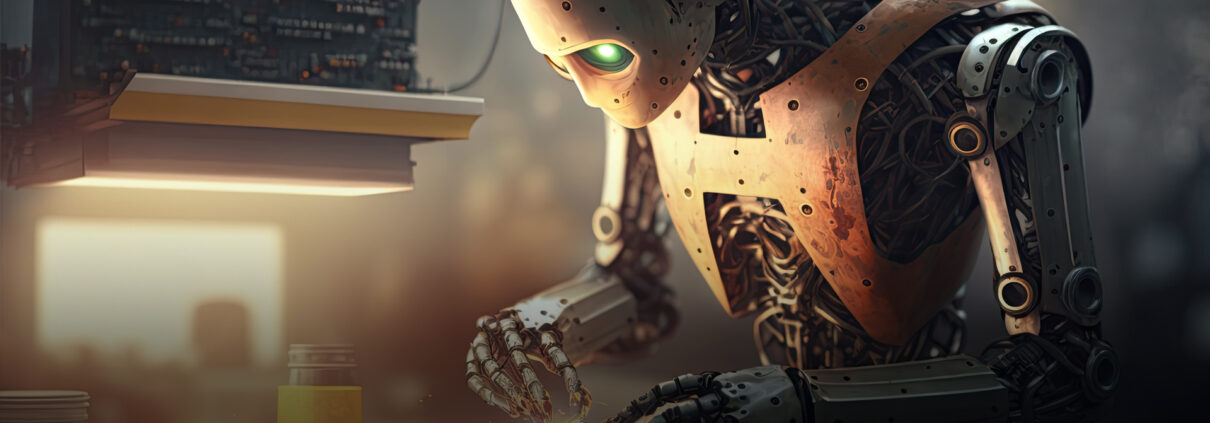Entry with AudioAutomation and IoT Revolutionizing Manufacturing Industries

Introduction:
Automation has long been a driving force behind increased efficiency and productivity, and the integration of IoT technology has taken it to new heights. Join us as we delve into the transformative impact of automation and IoT, the benefits they bring to manufacturing industries, and the future possibilities they unlock.
Automation in Manufacturing:
1.1 Understanding Automation:
Definition and evolution of automation in manufacturing. Role of automation in streamlining production processes and reducing manual labor. Types of automation systems, including robotic automation and computerized control systems.
1.2 Benefits of Automation:
Increased productivity and output through consistent and faster production cycles. Improved product quality and reliability with reduced human error. Enhanced worker safety by automating hazardous or repetitive tasks.
The Internet of Things (IoT) in Manufacturing:
2.1 Exploring the IoT:
Definition and key concepts of the Internet of Things. Connecting physical devices and machines to the internet for data exchange. Importance of real-time data collection, analysis, and remote monitoring.
2.2 IoT Technologies in Manufacturing:
Sensor networks and data acquisition systems for collecting real-time information. Cloud computing platforms for storing and processing massive amounts of data. Machine-to-machine (M2M) communication and industrial communication protocols.
Integration of Automation and IoT:
3.1 Smart Manufacturing and Industry 4.0:
The convergence of automation and IoT in the concept of Industry 4.0. Seamless integration of machines, systems, and data for intelligent manufacturing. Real-time decision-making based on data analytics and predictive algorithms.
3.2 Advantages of Automation and IoT Integration:
Predictive maintenance and condition monitoring for optimized equipment performance. Improved supply chain management through real-time tracking and inventory control. Enhanced production flexibility and customization to meet dynamic market demands. Applications of Automation and IoT in Manufacturing:
4.1 Smart Factory and Production Optimization:
IoT-enabled production lines with interconnected machines and systems. Real-time monitoring, control, and optimization of manufacturing processes. Automated workflow management and scheduling for efficient resource utilization.
4.2 Asset Tracking and Management:
Real-time tracking of assets, components, and inventory using IoT sensors. Improved traceability, inventory control, and supply chain visibility. Efficient asset utilization and reduced downtime through predictive maintenance.
4.3 Quality Control and Inspection:
IoT-enabled sensors and vision systems for real-time quality monitoring. Automated inspection processes for defect detection and prevention. Data-driven analytics to identify and resolve quality issues promptly.
4.4 Worker Safety and Productivity:
Collaborative robots (cobots) working alongside human workers for increased efficiency. Wearable devices and IoT-enabled safety systems to prevent accidents. Data-driven insights for optimizing worker performance and well-being.
Overcoming Challenges and Considerations:
5.1 Data Security and Privacy:
Implementing robust cybersecurity measures to protect sensitive data. Ensuring privacy compliance and data governance.
5.2 Integration and Interoperability:
Compatibility and integration of different automation and IoT systems. Standardization of communication protocols for seamless data exchange. Overcoming legacy system limitations and transitioning to new technologies.
Future Outlook and Trends:
6.1 Artificial Intelligence (AI) and Machine Learning (ML):
Integration of AI and ML algorithms for advanced analytics and decision-making. Autonomous decision-making and self-optimizing systems.
Conclusion:
Automation and IoT have revolutionized the manufacturing industry, bringing unprecedented levels of efficiency, productivity, and connectivity. The integration of automation systems with IoT technologies enables real-time data collection, analysis, and decision-making, transforming traditional factories into smart and interconnected ecosystems. As we embrace the future of manufacturing, the possibilities for automation and IoT continue to expand, promising a more intelligent, agile, and sustainable industry.





Leave a Reply
Want to join the discussion?Feel free to contribute!